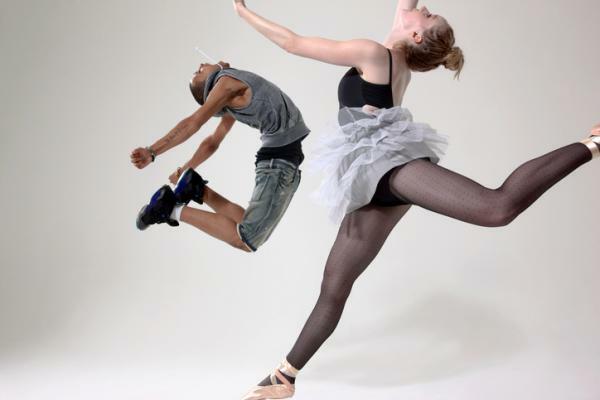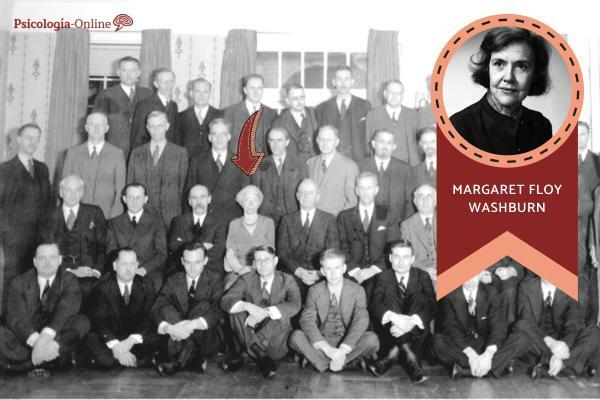
The use of artistic and body therapies It has currently acquired a huge boom, both for Psychology and for other disciplines. They approach man in a holistic way and recognize the body as a mediator of development, promote positive changes, stimulate creativity and the ability to express oneself freely and spontaneously. The corporal expression is a corporal therapy that has like instrument: the own body. At PsicologíaOnline, we invite you to read this article about the Body expression and communication skills.
Index
- Foreword
- Methodological design:
- Interventional Program
- Results
- Conclusions
Foreword.
Stimulating the development of communicative skills Through Body Expression techniques, it takes place precisely because the latter constitutes in itself a language and a way for internalization and externalization of sensations, emotions, feelings and thoughts in the individual, which has among its advantages include the sensitization and awareness of ourselves to, among other things, satisfy our needs to express, communicate, create, share and interact with him or others in the society in which we live.
From the Historical-Cultural approach, guiding focus of our current psychological school, attention is devoted to the issues of the body in a general way. This framework allows us to approach a conception of the body that could constitute in itself a mode of overcoming the dualism of the mind-body relationship that still puts barriers to research and development today current. It is currently a demand, on multiple levels: social, professional, scientific, disciplinary, etc., to expand the notion we have about the body today. It is also important to integrate the different disciplines in order to achieve greater attention to the body and its potential to promote better human development in all senses.
Man is a corporeal being, bearer of a psyche and the essence of it is social historical. From ontogeny and during its development, it is immersed in various social groups, influenced by the external environment: social, natural, historical, built. Their biological and psychological structures are in constant change and movement, even imperceptibly, from birth to death. Therefore we are a body and we have a body, and we can define it as: " Living system, that is interrelated with the external environment, cpray in space and / or time, which fulfills different functions, and in the case of human body is transformed by history and culture carried by other men, generation after generation, expressing themselves in a particular way ". This definition is an approximation elaborated by Dr. Febles in: "The body as a mediator of higher psychic functions. Towards a Body Therapy ”.
Know, become aware of how it is being built during our development, to explore how everyday events influence this construction, to know how it determines the body itself, its potentialities or their abilities, in our daily behavior and knowing how our body influences communication, are important and interesting at the same time, but also limited by the barriers that we impose on ourselves daily, by the established norms or by the customs formed from generation to generation. By participating in these approaches, we become, to some extent, responsible for seeking some ways to promote the knowledge of the body, the conscious work with it, to eliminate those barriers that prevent us from going beyond the word. Among the possible ways the Body Expression technique arises, it has been used by a large number of specialists from various branches and we assume it as a body therapy.
The Corporal expression constitutes in itself a language that achieves the integration of the areas physical, emotional and intellectual. "The Body Expression understood as movements, gestures of the body, is one of the means or essential potentialities of the individual to transmit his ideas, feelings, states of mind, emotions, to represent the way in which reality is perceived and elaborated, where all their affects such as their cognitions are mobilized ”(Aguirre, 2002, p. 17)
"Our daily experience is Body Expression" (Cabrera, 1998). Move in space and time, carry out certain activities every day, improvise, create, feel and perceive all this, interact with others, discover sensations, feelings, emotions, that is corporal expression, it is when the body dances through life with a very own movement in which it is known and recognize. "It is especially about a manifestation of the body that the person has not codified or chosen" and therefore: "Acquiring awareness of the bodily support of each of these expressions leads to work on their physical manifestations, discovering alternatives that increasingly correspond to our basic motives and communication needs " (Cabrera, 1998). The use of techniques in which conscious work with the body is enhanced, and specifically with the Its expression offers a possibility of enhancing the formation of personality in the individual.
It constitutes in itself a valuable technique, resulting in turn a manifestation of the body itself, with the common words: exploit, make conscious, work, communicate, express. Body Expression, in all its magnitude, body language or technique, acquires incalculable value when inserted in therapeutic, group or individual work, and even in teaching work.
Body Expression is a language that through the movement of the body communicates sensations, emotions, feelings and thoughts, encompassing other expressive languages such as speech, drawing and writing. In the same way, it has been established as a discipline that relies on other resources such as music, poetry that allow the individual a maximum expressive capacity that does not require prior skill.
The search for new therapeutic alternatives, in working with groups, that would allow the formation of communication skills was the motive that led to the Conducting an investigation at the University of Havana, in 2003, using as a sample a group of students from the School of Social Workers of Cojímar. We can conclude that body work, in particular body expression used in qualitative methodology, (including drawing, group experience and reflection) constitutes not only a mediator, but also becomes an important vehicle for development psychological. To demonstrate these approaches we followed the following methodological design.

Methodological design:
Problem:
How to contribute to promoting the development of communication skills using corporal expression in a group of adolescent students from the School of Social Workers of Cojímar?
Justification of the problem:
The Cojímar School of Social Workers is part of the emerging courses that have been taking place in our country for approximately three years. Starting from previous works where students from this school were used as a sample (Febles, 2001; Aguirre, 2002; Authors Collective, 2002), this research is aimed at the formation of communication skills in them. Communication is a fundamental element in the human being and in fact in Social Workers, precisely because of the nature of the social task they perform; hence the development of communication skills would favor a satisfactory relationship with the most diverse population sectors, without leaving aside what it would contribute from the point of view personal.
This work is directed taking as premises the results found in previous investigations in which "difficulties were detected in communication related in most cases with the expression of positive feelings, shyness and in some cases behaviors aggressive ”,“ the area of interpersonal relationships was detected where it was found that the main conflicts are in this area ”(Aguirre, 2002, p. 111). Other works provide us with “problems both in oral expression (problems of fluency, vocabulary, coherence or command of the language), and in writing. (shortness, simplicity of ideas, spelling mistakes) ”(Febles et al., 2001), a hypothesis that has emerged from personal teaching experience with these youths.
General objective:
Propose a system of actions that when contemplating Body Expression activities promote the development of communication skills in a group of adolescent students from the School of Social Workers of Cojímar.
Specific objectives:
- Base the use of Body Expression activities in an interventional program for the development of communication skills in adolescents from the School of Social Workers of Cojímar.
- Characterize the group of subjects in terms of the development of communication skills and the image they have of their own body.
- To elaborate a system of actions that contemplate the corporal expression.
- Observe the movement of the indicators of the development of the skills studied in line with the activities of corporal expression used in the subjects of the group during the course of the sessions.
- Offer a set of reflections that support the use of this program for the development of communication skills.
Subject group
To carry out our work, we used a group of adolescent students from the Cojímar Social Workers Training School, where he taught Psychology classes. It was chosen precisely because of the need to improve the quality of communication in them through the development of skills. communicative, since this is one of the technical-personological characteristics that a professional of this profile requires (Febles M. and others in Report of psychological characterization of a group of students of the emergent course of the School of social workers of Cojímar) is a necessary condition for the future performance of their role as workers social. The ages range from 17 to 19 years. They come from the Habana Vieja and Cerro municipalities, most of them live in neighborhoods characterized as marginal (among them "Belén", "Jesús María", "El Canal") and his last degree is the eleventh grade. It is a group of 12 students, since a figure that oscillated between 10 and 15 students was required, In addition, the proposal was negotiated with the group so that the participation had a character voluntary. The group is made up of 13 students, of them 2 males and the rest females.
Methodology, methods and techniques:
We use the qualitative methodology because it constitutes a flexible and perfectly adjustable approach to the study of social phenomena, because it is also a method that does not discover, but rather builds knowledge and defends the researched researcher union through a systematic, flexible, ecological and user-oriented approach. values. However, we also consider it necessary to use the quantitative methodology, although to a lesser extent scale, the use of percentages, the method of proportions allows us a better description of the results.
We use several methods, including the documentary study which consisted of the study of different documents related to the topics covered in this work (Communication and communication skills, Body Expression, group and adolescence); with the aim of delving into the theoretical and practical considerations that different authors have on the aforementioned topics. A logical historical analysis consisting of the search for information about previously carried out investigations, with the objective of knowing antecedents in the work of Body Expression as a technique of intervention. The modeling of a program of ten sessions took place that included activities of corporal expression, in addition to the observation as an empirical method to collect all the detailed information on the evolution of each of the subjects of the study.
We use techniques for the exploration and diagnosis of the development of communication skills and for the evaluation of the image that the subjects had of their own body. Between them: "My most significant relationships", "The person I communicate with the most", "Communication questionnaire", Body questionnaire "," Self-drawing ".
Interventional Program.
Beginning:
Active character of the subject: it mediates the influence of the intervention and takes responsibility for the changes.
Experiential work: promote awareness of the experience raised by the activity.
Collaboration principles: promote collaborations between group members that favor their development and foster a climate of solidarity and empathy.
Principle of body work: express experiences, feelings and ideas through body language. Development of sensitivity and awareness of the body.
Individual approach in group intervention: treatment from different levels of help that are provided taking into account the degree of motivational development achieved.
Reflection principle: Reflection through debate.
Group rules:
- Assistance and punctuality.
- Respect among group members.
- Participation, Collaboration and Involvement with the task.
- Share comments.
- Do not say I do not know, but express what you think.
- Express with the whole body.
- Do not prosecute, make constructive criticism.
Process:
Sessions should be held twice a week for 90 minutes. Observation can be used, and recordings can be made to obtain much more complete information about what happened in the session. It requires a large room, with adequate lighting and ventilation. And for the last session we believe it is advisable to do it in an outdoor place, combine the session with a visit to a historical or recreational place.
Each session is divided into three parts:
Start: In this part it is essential to always carry out a warm-up activity, sometimes you can start with a relaxation if the coordinator creates it. Before moving on to the development activity, you should go back to what happened in the previous session and move on to the topic of the session.
Goals:Motivate the people in the group through warming up.
Prepare the people in the group for the topic that is being worked on.
Promote the exchange with the own body and the expression through it.
Promote the bond between members.
Developing: The activity of the session that must respond to the specific objectives of the session is carried out and it is reflected through the debate.
- Final: A closing technique is used where the group is dismissed.
- Objectives: Close the activity.
- Check the contents worked through the evaluation of the activity.
- Guide the task.
- Commit them for the next sessions.
The sessions are carried out based on the information obtained in the characterization techniques pursuing as its main goal the stimulation of the development of skills that are less developed. The previous session is always taken into account to carry out the next one. Music is used in most sessions, fundamentally to accompany the activities, however there is the possibility that they will use their language expressive to make sounds and sing with the aim of expressing with the body through movements, and dance.
Results.
Making an integrated analysis of the techniques applied initially and of the observation of the sessions, we obtained the following results:
In the initial characterization of the communication skills of the members of the group studied, it was revealed that the skills less developed in the study group are, first of all, the ability to empathically understand, developed in only 25% of people. This is followed by the skills of active listening and of establishing interpersonal relationships, both developed in only half of the people in the group (50%). And as the skills most developed by the subjects of the study group we find the ability to make criticisms, present in 58.3% of cases and the ability to express positive feelings, developed in 66% of people of the group.
Among the indicators that had reached a lower development we found those related to: the possibility of putting oneself in the place of the other, developed only in 25% of cases, the possibility of starting conversations with strangers, developed only by half of the subjects, and the following that were developed by 58.3% of the people in the group but that still find limitations, are the following indicators: attention to what the other expresses, adoption of contemplative postures, listening, possibility of accepting criticism, etc. These are indicators that are at a medium level of development in the group. We consider the rest of the indicators (more developed) as aspects in which we can rely to stimulate the development of skills: the ability to accept praise, an active attitude in fostering affective closeness, a supportive attitude, etc. and the level of knowledge of the other that is between medium and high in most cases.
With respect to body image development the subjects are at a superficial level, at the level of acceptance of their own body is at a medium level For the majority of cases (58.3%), negatively evaluated parts of the body predominate over those evaluated positively. Through self-drawing, we were able to determine that for the majority (83.3%) the image of the body is associated with the aesthetic point of view, external physical characteristics and elements of clothing. Among the results of the self-drawing qualification we also detected traits of insecurity (91% of the cases) of immaturity (83.3%), family dependence in 100% of the people in the group. This is closely related to the fact that the most significant relationships represented in technique # 1 are limited to the frames: family and partner in 100% of the cases. We are also struck by the fact that 83.3% of the cases were detected interaction problems, difficulties in communication, although it is also relevant that the faces in the drawings, in 75% demonstrates the ability to express, which detracts from the results on the skills obtained previously.
From the results we decided orient the intervention towards the development of all skills emphasizing the indicators that appeared as greater difficulty in the techniques of characterization, information that is complemented with the collection from the observation guide in the sessions. The most deficient indicators were the following: the possibility of putting oneself in the place of the other, the possibility of starting conversations with strangers, attention to what the other expresses, adoption of contemplative postures, listening, possibility of accepting critics. We also wanted to develop communication with one's own body and develop the image that subjects have of their own body, its knowledge and acceptance.
During the sessions they manifested difficulties encountered in the initial characterization In a greater degree of deficiency, a characteristic feature that had not been very evident in the techniques was even detected in the majority: a certain tendency to aggressiveness in the face of the difference in criteria, which is why activities are also carried out in the transformation of this characteristic. For example, emphasis was placed on activities in which affections, emotions, etc. were transmitted. Another indicator that is at an insufficient level of development, detected in the sessions, is the way in which make the critiques for or that activities of corporal expression and debates were destined for the reflection in the group.
There was a gradual development of skills in general and of the indicators fundamentally, which is expressed from the process of identifying them, passing through the reproduction and imitation of behaviors until the incorporation or awareness, the latter was reflected in the importance of the contents learned to other moments outside the workshop and different from the same. We can affirm that the skills most developed during the sessions in the subjects were to listen actively, to understand empathically and to establish interpersonal relationships.
The most significant changes were related to the ability to pay attention to what the other expresses, to express positive feelings, as well as the possibility of making and receiving criticism and of establishing interpersonal relationships, and the indicators that reached greater development were attention to the other, putting oneself in the other's place, and establishing affective interpersonal relationships.
They were also observed improvements in the dynamics of body expression, the movements became more and more spacious, sure and spontaneous. It also enhanced the development of body awareness through exploration and touch. In general, positive changes were observed in all subjects, in some more evident than in others. The body language activities contributed to the cohesion of the group through the collaborations between the members and the work with the body. At the same time that the group framework fostered the exchange of information and emotions among its members, an aspect that promotes the development of the group. In the interaction through the sessions, existing affective bonds were also strengthened and new ones were created, achieving an environment pleasant.
The sessions experienced positively, favoring the construction of knowledge and the formation of communication skills are: sessions 3, 7, 6 and 8. In them the topics were addressed: Active listening, Expression of Positive Feelings, Criticity and Interpersonal Relationships. These sessions promoted the awareness on the part of the subjects of the fundamental difficulties in the development of their communication skills. The people in the group were aware of habits, learned behaviors that interrupt the communication process and prevent expression through the body. The sessions that provoked the most reflections were sessions 3 (Whenever we listen, do we listen?) And 6 (Criticality), and those with the most influence on the formation of new affective bonds and the creation of new ones were: 7 (Expression of Positive Feelings) and 8 (Relationships Interpersonal).
Of the activities, the one that is considered difficult although not unpleasant, was the activity in which they turned into objects, animals or things. This could be related to the fact that the body's potentialities were not sufficiently exploited. The "burning of the I can't" was the activity that was most remembered for the positive experiences that occurred in each person in the group, it was even represented as the one that most liked, as well as a moment of session 3 in which the statues were created and modified representing listening situations and does not listen.
We consider it necessary for other workshops to take into account the need to activate and motivate subjects From the beginning of the sessions, a small warm-up space could be included using physical exercises. This would constitute an alternative that, together with relaxation, would prepare the body for conscious work. Both can be used according to the status of the individuals, even together in sessions.

Conclusions.
Among the main achievements or contributions of this work we can refer:
The system of actions developed and applied contributed to the development of communication skills in a group of students from the School of Social Workers using Body Expression as a technique that in turn constitutes a language, which through movement communicates sensations, emotions, feelings and thoughts.
The characterization of the group obtained provided us with information on the development of communication skills and body image serving as a point of reference for the development and implementation of the system of actions.
The development of the action system was carried out in a flexible way, always taking into account the results obtained in the previous session, the use of Body Expression activities, group dynamics and techniques was also contemplated participatory.
The movement of the indicators of the development of the skills studied was observed in line with the activities of corporal expression used in the subjects of the group during the course of the sessions.
A set of reflections was offered that support the use of this program for the development of communication skills:
- Body work, in particular the corporal expression used in the qualitative methodology, (including drawing, experience and group reflection) constitutes no only a mediator, but due to its ontegenetically mobilizing nature of functions, it becomes an important vehicle for development psychological.
- Body expression in adolescents it takes up the role of psychomotor development, probably obstructed in previous ages, updating and enhancing the psychic functions that have remained inhibited or stopped in their development, beginning to Express oneself.
- The work carried out allows us to hypothesize that body expression favors the appearance of emotions, the relationship with oneself, which in turn awakens functions, from the reestablishment of interconnections and internal links between the bodily as a whole and the psychological as a function of the Body.
- Due to its multidimensional nature, it promotes development in different areas of personality (insecurity, conflicts, immaturity, family dependence), but very particularly the communicative function, which together with the activity constitutes a fundamental principle of development.
This article is merely informative, in Psychology-Online we do not have the power to make a diagnosis or recommend a treatment. We invite you to go to a psychologist to treat your particular case.
If you want to read more articles similar to Body expression and communication skills, we recommend that you enter our category of Cognitive psychology.
Bibliography
- Aguirre, A.: "Dance, an excellent ingredient in the development of the individual." Diploma work. Faculty of Psychology. University of Havana, 2002.
- Alfonso, B.: "Interventional program to stimulate interpersonal communication in children with psychological alternatives of intermediate school age". Diploma work. University of a Havana. 2000.
- Anastasi, A.: "Psychological Test". Editorial Pueblo y Educación. Havana. Cuba. 1983.
Arzuaga, N.: "Use of Taijiquan linked to group dynamics for the development of self-knowledge in patients - stressed ”. Diploma work. University of a Havana. 1998.
- Báez, C. J.: "Effective communication" Technological Institute of Santo Domingo. 2000.
- Cáceres, V.: "Transit Body Psychology". Photocopied article.
- Cabrera, M.: "Body expression in the development of self-awareness. Preliminary study for an intervention ". Diploma work. Faculty of Psychology. University of Havana. 1988
- Calviño, M .: “Work in and with groups. Basic experiences and reflections ". Editorial Academia. To Havana. Cuba. 1998.
- Casales, J. C.: "Interpersonal communication. Criteria for a definition " Selection of Social Communication readings. Volume II. Editorial Felix Varela. Havana. 2002.
- Collective of authors: "Educational Psychology Learning Program I" Faculty of Psychology. University of Havana. 2002
- ________________.: "Selection of Introductory Readings to Psychology." Course for Social Workers. Printed in Servigraf. 2000
- _________________.: "Education for movement. Book 2 "(Disc 3, 5). Available at the Manuel Fajardo Superior Sports Institute.
- ________________.: "Methodology of educational research". First and Second Part. Editorial Pueblo y Educación. Havana. 1996
- Crash, I.: "The use of bioenergetic techniques and group dynamics for the reduction and control of stress". Diploma work. Faculty of Psychology. University of Havana. 2000.
- "Hispano-American Encyclopedic Dictionary of Literature, Science and Arts, etc". Volume V. Editors Montaner and Simón, W. M. Jackson, Inc. New York.
- Décker, B.: "The art of communication. How to make a personal impact on business ”. Photocopied article.
- Domínguez, L.: "Psychological issues of personality development". Editorial Pueblo y Educación. To Havana. 1990
- Engels, F.: "The role of work in the transformation of the monkey into man". General Psychology Readings I. Ministry of Education. Havana. 1987
- Escudero, M.: "Communication in teaching." Photocopied article.
- Fast, J.: "The language of the body". Editorial Kairós. Barcelona. 1994
- Febles, M. And others.: "Psychological characterization of a group of students from the emergent course of the School of Workers
- of Cojímar ”. Faculty of Psychology. University of Havana. 2001. Work report.
- Febles, M.: "The historical legacy.


